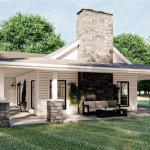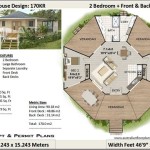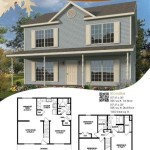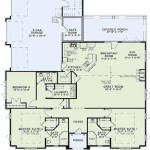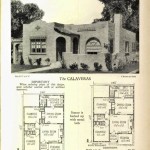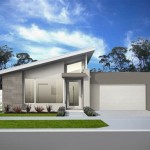How To Get a Floor Plan of an Existing House
Acquiring a floor plan of an existing house is often a crucial step in various endeavors, ranging from interior design projects and home renovations to real estate appraisals and insurance assessments. Understanding the layout and dimensions of a property is essential for accurately planning modifications, assessing its value, and ensuring compliance with building codes. Fortunately, several methods are available for obtaining a floor plan, each with varying degrees of accuracy, cost, and required expertise. This article will explore the common approaches used to generate floor plans for existing houses, detailing the process, tools needed, and considerations for each technique.
Manual Measurement and Sketching
One of the most straightforward methods for creating a floor plan involves manually measuring the dimensions of each room and area within the house. This approach requires basic tools and a degree of diligence to ensure accuracy. The primary tools needed for manual measurement include a measuring tape (preferably a long one, at least 25 feet), a notepad, a pencil, and potentially a laser distance measurer for larger spaces. The process begins by systematically measuring the length and width of each room, carefully noting the locations of doors, windows, and any built-in features like fireplaces or closets. It is important to measure along the walls at floor level, ensuring the tape is taut and straight. When measuring the thickness of walls, measure from the doorway or window opening to the outside of the frame.
Once the measurements are taken, the next step is to sketch the floor plan to scale on the notepad. This involves carefully transferring the measurements onto the paper, ensuring that the proportions are accurate. A common technique is to use a consistent scale, such as ¼ inch representing one foot, to maintain accuracy. Begin by sketching the external walls of the house, then move inwards, adding interior walls, doors, and windows according to their measured positions. It is essential to maintain consistency in the scale and to double-check the measurements as the sketch progresses. This method can be time-consuming, but it offers a high degree of control over the final product and can be relatively inexpensive if done without specialized equipment. However, accuracy is paramount, and errors in measurement or sketching can lead to inaccuracies in the final floor plan.
Accuracy can be increased by using a laser distance measurer. These devices emit a laser beam to accurately measure distances between points without the need for physical contact. They are particularly useful for measuring long distances or areas that are difficult to access with a traditional measuring tape. Laser distance measurers can significantly reduce the time required for measurement and improve the accuracy of the overall floor plan. Additionally, consider using graph paper for sketching to assist in maintaining straight lines and accurate proportions.
Using Floor Plan Software
Floor plan software provides a digital alternative to manual sketching and measuring, offering tools to create accurate and detailed floor plans on a computer or tablet. These software programs typically offer customizable templates, drawing tools, and a library of symbols for doors, windows, furniture, and other architectural elements. Several software options are available, ranging from free or low-cost programs to more advanced professional-grade applications. Some popular options include SketchUp, AutoCAD, RoomSketcher, and Planner 5D.
The process of creating a floor plan using software typically involves inputting the dimensions of each room and wall, either by manually entering the measurements or by importing scanned images of existing blueprints or sketches. Once the basic layout is established, the software allows for the addition of doors, windows, and other architectural features from the symbol library. The user can then customize the appearance of the floor plan by adding colors, textures, and furniture to create a more visually appealing and informative representation of the house. Many software programs also offer 3D modeling capabilities, allowing users to visualize the floor plan in three dimensions.
The advantages of using floor plan software include increased accuracy, ease of modification, and the ability to create professional-looking floor plans quickly. Software programs can automatically calculate areas and dimensions, reducing the risk of human error. They also allow for easy editing and revisions, making it simple to experiment with different layouts and design options. Furthermore, many floor plan software programs offer export options that allow users to share their floor plans in various formats, such as PDF, JPEG, or DWG. However, using floor plan software requires some technical proficiency, and the cost of the software can be a barrier for some users. Certain software may also have a steep learning curve, requiring training or tutorials to master its features effectively.
Professional Surveying and Architectural Services
For the most accurate and comprehensive floor plans, engaging the services of a professional surveyor or architect is the recommended approach. These professionals possess the expertise, equipment, and training necessary to create highly detailed and precise floor plans that meet industry standards. A professional survey typically involves using advanced measurement techniques, such as laser scanning and total station surveying, to capture the dimensions and features of the house. This data is then processed using specialized software to generate a precise floor plan that accurately represents the layout and structure of the building.
Architects bring a unique perspective to floor plan creation, as they possess a deep understanding of building codes, structural integrity, and design principles. They can not only create accurate floor plans but also provide valuable insights into the potential for renovations, additions, or modifications to the house. Architects can also assist with obtaining building permits and ensuring compliance with local regulations. Architectural floor plans are typically more detailed than those produced by surveyors, including information on plumbing, electrical systems, and structural components.
The primary advantage of using professional surveying or architectural services is the high degree of accuracy and reliability of the resulting floor plans. These plans can be used for a wide range of purposes, including real estate transactions, insurance claims, construction projects, and building permit applications. Professional floor plans are often required for complex renovations or additions, where precise measurements and detailed specifications are essential. However, the cost of professional surveying or architectural services can be significant, making it a less accessible option for homeowners with limited budgets.
Utilizing Existing Resources and Records
Before embarking on the process of creating a new floor plan, it's worthwhile to explore existing resources that may already contain the information you need. Several sources might hold existing floor plans or related documents, potentially saving time and money.
Local Building Departments: Many local building departments or city halls maintain records of building permits and construction plans for properties within their jurisdiction. These records often include floor plans that were submitted as part of the permit application process. Access to these records may be subject to certain fees or restrictions, but they can provide a valuable source of information about the house's layout and dimensions. Contacting the building department and inquiring about the availability of floor plans or related documents is a good starting point.
Previous Owners or Real Estate Agents: If possible, contacting the previous owners of the house or the real estate agents involved in its sale can be a valuable resource. They may have copies of floor plans or other documents that were provided during the sale process. These documents may not be perfectly accurate or up-to-date, but they can provide a useful starting point for creating a new floor plan. It's worth reaching out to these individuals to inquire about the availability of any relevant documents.
Mortgage or Appraisal Documents: Mortgage lenders and appraisers often require floor plans as part of the loan approval or property valuation process. These floor plans may be included in the mortgage or appraisal documents, which can be obtained from the lender or the homeowner's records. While these floor plans may not be as detailed as those produced by professional surveyors or architects, they can provide a basic understanding of the house's layout and dimensions. Reviewing these documents can be a quick and easy way to obtain a floor plan of the existing house.
3D Scanning Technology
The advancement of 3D scanning technology has provided a revolutionary method for acquiring floor plans of existing houses. This approach utilizes specialized hardware and software to capture the three-dimensional geometry of a space, creating a highly accurate digital representation of the building's interior. 3D scanners work by emitting laser beams or structured light patterns that measure the distance to various surfaces within the house. The collected data is then processed to create a point cloud, which is a dense collection of data points representing the shape and dimensions of the space.
The process of creating a floor plan using 3D scanning technology typically involves placing the scanner in various locations throughout the house, ensuring that all areas are captured. The scanner then rotates and collects data, creating a comprehensive 3D model of the interior. Once the scanning process is complete, the data is processed using specialized software to generate a floor plan, which can be exported in various formats, such as DWG, PDF, or JPEG. Some software programs also allow for the creation of virtual tours and 3D models that can be used for marketing or design purposes.
The advantages of using 3D scanning technology include high accuracy, speed, and the ability to capture complex geometries and architectural details. 3D scanners can accurately measure distances and angles, reducing the risk of human error. They also work much faster than traditional manual measurement methods, making it possible to create floor plans in a fraction of the time. Furthermore, 3D scanners can capture details that might be missed by manual measurement, such as the curvature of walls or the intricate details of architectural features. The downside is the initial cost of the equipment or the potential need to hire a professional who specializes in 3D scanning. The cost can be a significant barrier for some individuals.
The selection of the appropriate method for obtaining a floor plan of an existing house depends largely on the desired level of accuracy, budget constraints, and technical expertise. Manual measurement and sketching provide a cost-effective option for simple layouts, while floor plan software offers a more accurate and efficient alternative. For complex projects or situations requiring high accuracy, professional surveying or architectural services are the recommended choice. Exploring existing resources, such as building department records and mortgage documents, can also provide valuable information and potentially save time and money. Furthermore, advancements in 3D scanning technology offer a revolutionary method for creating highly accurate and detailed floor plans.

9 Ways To Find Floor Plans Of An Existing House Blueprints Archid

9 Ways To Find Floor Plans Of An Existing House Blueprints Archid

House Plans How To Design Your Home Plan

House Plans How To Design Your Home Plan

Draw Floor Plans In Half The Time Cedreo

9 Ways To Find Floor Plans Of An Existing House Blueprints Archid

Residential Floor Plan Measuring Services Bvm Contracting

House Plans How To Design Your Home Plan

The 1940s Fixer Upper Changing Up Floor Plan Ckd Remodeling

Floor Plans With Dimensions Including Examples Cedreo
Related Posts


